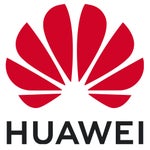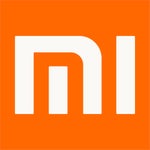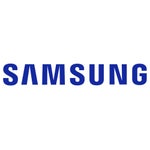News
Xiaomi 17 Ultra to Support Direct Satellite Connection via Tiantong-1 and Beidou: Revolutionary Connectivity Breakthrough
Xiaomi 17 Ultra to Support Direct Satellite Connection via Tiantong-1 and Beidou: Revolutionary Connectivity Breakthrough
The Xiaomi 17 Ultra is poised to revolutionize smartphone connectivity by becoming one of the first mainstream devices to offer direct satellite communication capabilities through China's advanced Tiantong-1 and Beidou satellite systems. This groundbreaking feature, recently approved by Chinese regulatory authorities, positions Xiaomi as a pioneer in bringing satellite technology to consumer smartphones.
Regulatory Approval Confirms Satellite Capabilities
Official Certification Details
The Xiaomi 17 Ultra has received official approval from Chinese regulatory bodies to utilize direct satellite connectivity, marking a significant milestone in smartphone technology development. The certification specifically mentions support for both Tiantong-1 and Beidou satellite systems, enabling users to make satellite calls, send messages, and maintain communication even in areas completely devoid of cellular coverage.
The regulatory filing reveals the device carries model number 25128PNA1C, which differs from earlier leaked model numbers, suggesting this could be a China-specific variant with enhanced satellite capabilities or potentially indicating multiple versions of the device are in development.
Understanding Tiantong-1 Satellite Technology
China's First Mobile Communication Satellite System
Tiantong-1 represents China's first self-developed mobile communication satellite system and serves as a crucial component of the country's space information infrastructure. The system consists of multiple geosynchronous orbit satellites positioned approximately 36,000 kilometers above Earth, providing comprehensive coverage across China and surrounding regions including Southeast Asia and Northeast Asia.
Technical Capabilities and Coverage
The Tiantong-1 system specializes in low and medium-speed mobile communication services, supporting voice calls, fax transmission, image sharing, and Internet of Things (IoT) connectivity for various mobile platforms including individuals, vehicles, aircraft, and vessels. This satellite network offers all-weather, round-the-clock communication services, particularly valuable in mountainous, plateau, and remote areas where traditional cellular networks are unavailable.
Beidou Navigation System Integration
Beyond Navigation: Communication Features
While primarily known as China's answer to GPS, the Beidou Navigation Satellite System (BDS-3) offers unique two-way short message communication capabilities that distinguish it from other global positioning systems. This feature enables users to send and receive text messages via satellite, providing a critical communication lifeline during emergencies or in remote locations.
Advanced Messaging Capabilities
The Beidou system supports short message services with impressive technical specifications, offering positioning accuracy at decimeter and centimeter levels, speed measurement accuracy of 0.2 meters per second, and timing accuracy of 10 nanoseconds. The integration of Beidou messaging functionality in smartphones represents a significant advancement in emergency communication technology.
UWB Technology Returns to Xiaomi Flagships
Ultra-Wideband Support Confirmed
Alongside satellite connectivity, the regulatory filing confirms that the Xiaomi 17 Ultra will feature Ultra-Wideband (UWB) technology support, marking its return to Xiaomi's flagship lineup after being absent since the Mi MIX 4. UWB technology enables precise spatial awareness and secure device-to-device communication with centimeter-level accuracy.
Automotive and Smart Home Applications
The inclusion of UWB technology aligns perfectly with Xiaomi's expansion into the automotive sector and smart home ecosystem. UWB enables seamless digital car key functionality, allowing users to unlock and start vehicles through proximity detection, while also enhancing smart home device interactions through precise positioning capabilities.
Competitive Landscape and Market Positioning
Satellite Connectivity Competition
The Xiaomi 17 Ultra enters a competitive landscape where satellite connectivity is becoming increasingly important. Apple's iPhone 14 and later models offer Emergency SOS via satellite through Globalstar, while Google's Pixel 9 series provides satellite emergency messaging capabilities. Samsung's Galaxy S25 series also supports satellite connectivity through carrier partnerships with Skylo and other providers.
Unique Chinese Satellite Advantage
However, Xiaomi's implementation offers distinct advantages through China's indigenous satellite systems. Unlike Western competitors relying on international satellite networks, the Tiantong-1 and Beidou integration provides comprehensive coverage specifically optimized for Asian markets and offers both emergency and casual messaging capabilities.
Technical Implementation and User Experience
Seamless Integration
The satellite connectivity features will likely integrate seamlessly with the device's communication systems, automatically activating when cellular networks are unavailable. Users can expect the ability to send satellite messages for both emergency situations and regular communication needs, particularly valuable for travelers, outdoor enthusiasts, and users in remote areas.
Battery and Performance Considerations
Early reports suggest the satellite-enabled version may feature enhanced battery capacity, with some sources indicating a substantial 6800mAh battery to support the power requirements of satellite communication. This represents a significant upgrade from typical flagship battery capacities and addresses the higher power consumption associated with satellite connectivity.
Expected Launch Timeline and Availability
Release Schedule
The Xiaomi 17 Ultra is expected to launch in early 2026, following the recent release of the Xiaomi 17 series in China. Some reports suggest a potential December 2025 launch for the Chinese market, with global availability following in subsequent months.
Market Availability Concerns
The different model number (25128PNA1C) in the regulatory filing raises questions about global availability of satellite features. This could indicate that satellite connectivity might initially be limited to the Chinese market or that Xiaomi plans to release multiple variants with different feature sets for different regions.
Future Implications for Smartphone Industry
Setting New Standards
The Xiaomi 17 Ultra's satellite connectivity represents a significant step toward universal smartphone connectivity, potentially setting new industry standards for flagship devices. As satellite networks continue to expand globally, direct satellite communication may become as essential as cellular connectivity for premium smartphones.
Ecosystem Integration
The combination of satellite connectivity and UWB technology positions the Xiaomi 17 Ultra as a comprehensive connectivity solution, bridging terrestrial and space-based communication systems while enabling advanced IoT and automotive applications. This integration demonstrates Xiaomi's commitment to creating a unified ecosystem spanning smartphones, vehicles, and smart home devices.
The Xiaomi 17 Ultra's satellite connectivity breakthrough represents more than just a feature addition—it signals the beginning of a new era in smartphone communication where global connectivity is no longer dependent solely on terrestrial infrastructure. With its advanced satellite capabilities, enhanced camera system, and return of UWB technology, the device promises to deliver unprecedented connectivity and functionality for users worldwide.
Related Articles
- Xiaomi 17 Pro Camera Specs Leak: 50 MP Leica Triple Camera, 5× Telephoto & Magic Back Screen
- Xiaomi 17 Pro Camera Specs Leak: 50 MP Leica Triple Camera, 5× Telephoto & Magic Back Screen
- Xiaomi 16 Series Leak Reveals The Return of The Secondary Display
- Xiaomi 16 and 16 Pro Set to Revolutionize Selfie Cameras with 50 MP Upgrade and Snapdragon 8 Elite 2












